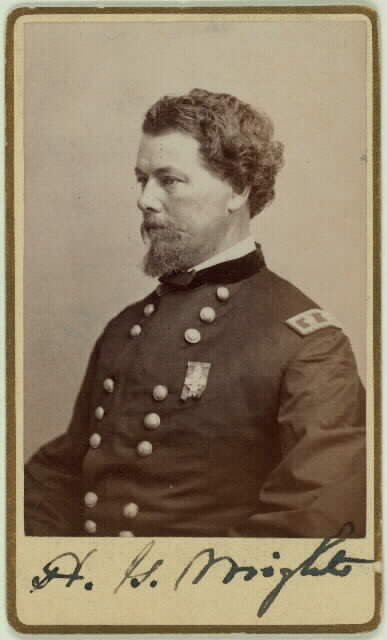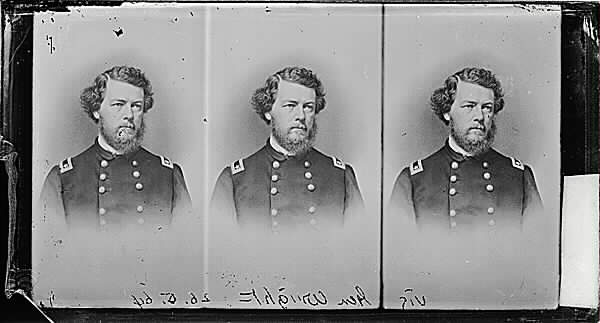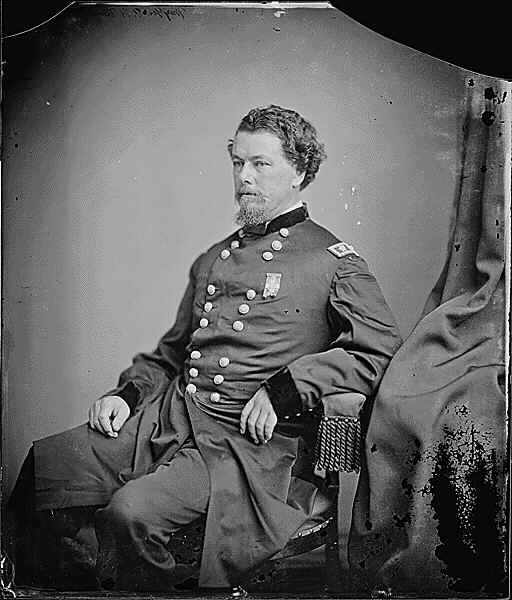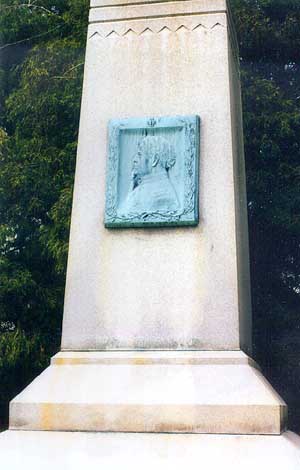Born at Clinton, Connecticut March 6, 1820, he graduated from the U.S. Military Academy in 1842, second in his class, remaining two years as Assistant Professor of Engineering at West Point.
He was appointed a Brigadier General of Volunteers in September 1861, and Major General of Volunteers in July 1862. During the Civil War, he served Chief engineer of Heintzelman’s Division at the battle of Bull Run, and in the Port Royal expedition he commanded a Brigade. In February 1862, he was in the expedition that captured Fernandina, Florida, and commanded a Division in the attack on Secessionville, South Carolina in June 1862. In July he was assigned to the Department of the Ohio, and commanded the 1st Division, VI Corps, in the Army of the Potomac at Gettysburg. After General Sedgwick’s death, he was in command of the VI Corps, which he led in the Richmond campaign until July 1864, when he was sent to the defense of the national capital, and afterwards, in August to December, he was engaged in the Shenandoah campaign. He was wounded in the battle of Cedar Creek, and was in final military operations which ended with the surrender of Lee. After the Civil War he was military governor of Texas until 1866 when he resumed his practice of civil engineering.
He was breveted Major General, US Army, in March 1865, was promoted to Brigadier General and Chief of Engineers, June 30, 1879, and was retired March 6, 1884. He died at Washington, DC, July 2, 1899.
During his career he undertook numerous military engineering tasks. He completed the Washington Monument, which had been halted because of the Civil War, in 1884, the year that he retired from the Army with the rank of Brigadier General. The obelisk marking his grave was erected by survivors of VI Army Corps, Army of the Potomac, which he commanded from the Battle of Spotsylavnia in May 1864 to the end of the war.



Michael Robert Patterson was born in Arlington and is the son of a former officer of the US Army. So it was no wonder that sooner or later his interests drew him to American history and especially to American military history. Many of his articles can be found on renowned portals like the New York Times, Washingtonpost or Wikipedia.
Reviewed by: Michael Howard

